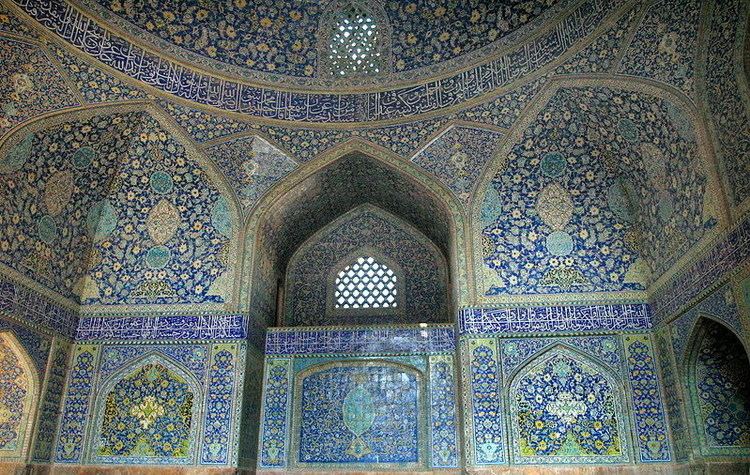Hex triplet #1C39BB CMYK (c, m, y, k) (100, 100, 21, 11) Source [1] and Maerz and Paul | sRGB (r, g, b) (28, 57, 187) HSV (h, s, v) (249°, 85%, 49%) | |
 | ||
Persian blue (not to be confused with Prussian blue) comes in three major tones: Persian blue proper—a bright medium blue; medium Persian blue (a medium slightly grayish blue that is slightly indigoish); and a kind of dark blue that is much closer to the web color indigo; this darker shade of Persian blue is referred to as Persian indigo, dark Persian blue, or regimental.
Contents
- Persian blue
- Medium Persian blue
- Persian indigo
- Persian blue and its variations in human culture
- References
Other colors associated with Persia include Persian pink, Persian rose, Persian red and Persian green.
Persian blue
The color Persian blue is named from the blue color of some Persian pottery and the color of tiles used in and on mosques and palaces in Iran and in other places in the Middle East. Persian blue is a representation of the color of the mineral lapis lazuli which comes from Persia (i.e. modern Iran) and Afghanistan. (The color azure is also named after the mineral lapis lazuli.)
The first recorded use of Persian blue as a color name in English was in 1669.
Medium Persian blue
The medium tone of Persian blue shown at right is the color called Persian blue in color sample #178 of the ISCC-NBS color list.
The source of this color is the ISCC-NBS Dictionary of Color Names (1955), a color dictionary used by stamp collectors to identify the colors of stamps, now on the Internet—see sample of the color Persian blue (color sample #178) displayed on indicated web page: [2].
Persian indigo
The color Persian indigo is displayed at right. Another name for this color (seldom used nowadays) is regimental. The color was called regimental because in the 19th century it was commonly used by many nations for navy uniforms.
Persian indigo is named for an association with a product from Persia: Persian cloth dyed with indigo.
The first recorded use of regimental (the original name for the color now called Persian indigo) as a color name in English was in 1912.
Persian blue and its variations in human culture
Architecture
Military
New Age Metaphysics
Persian carpets
